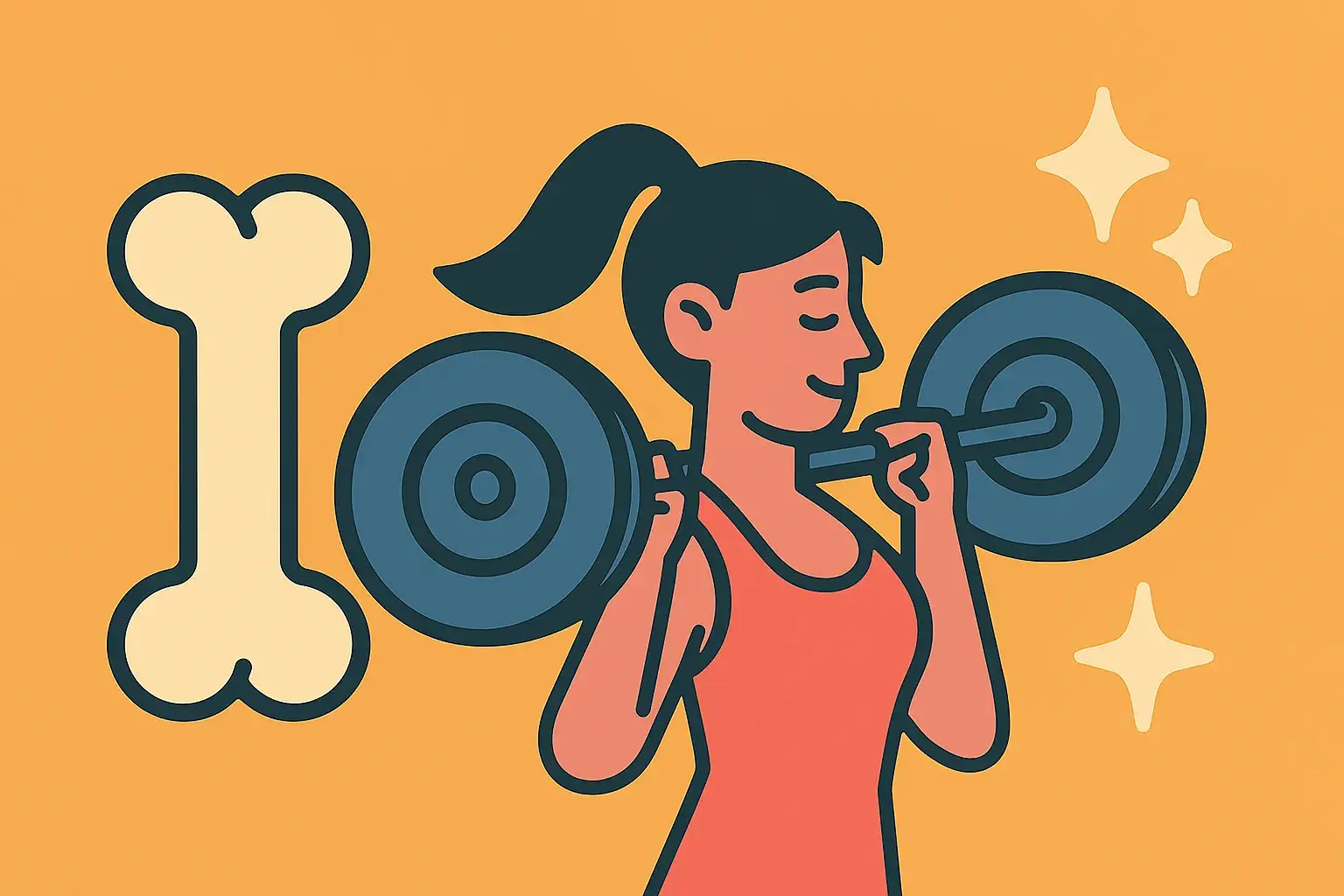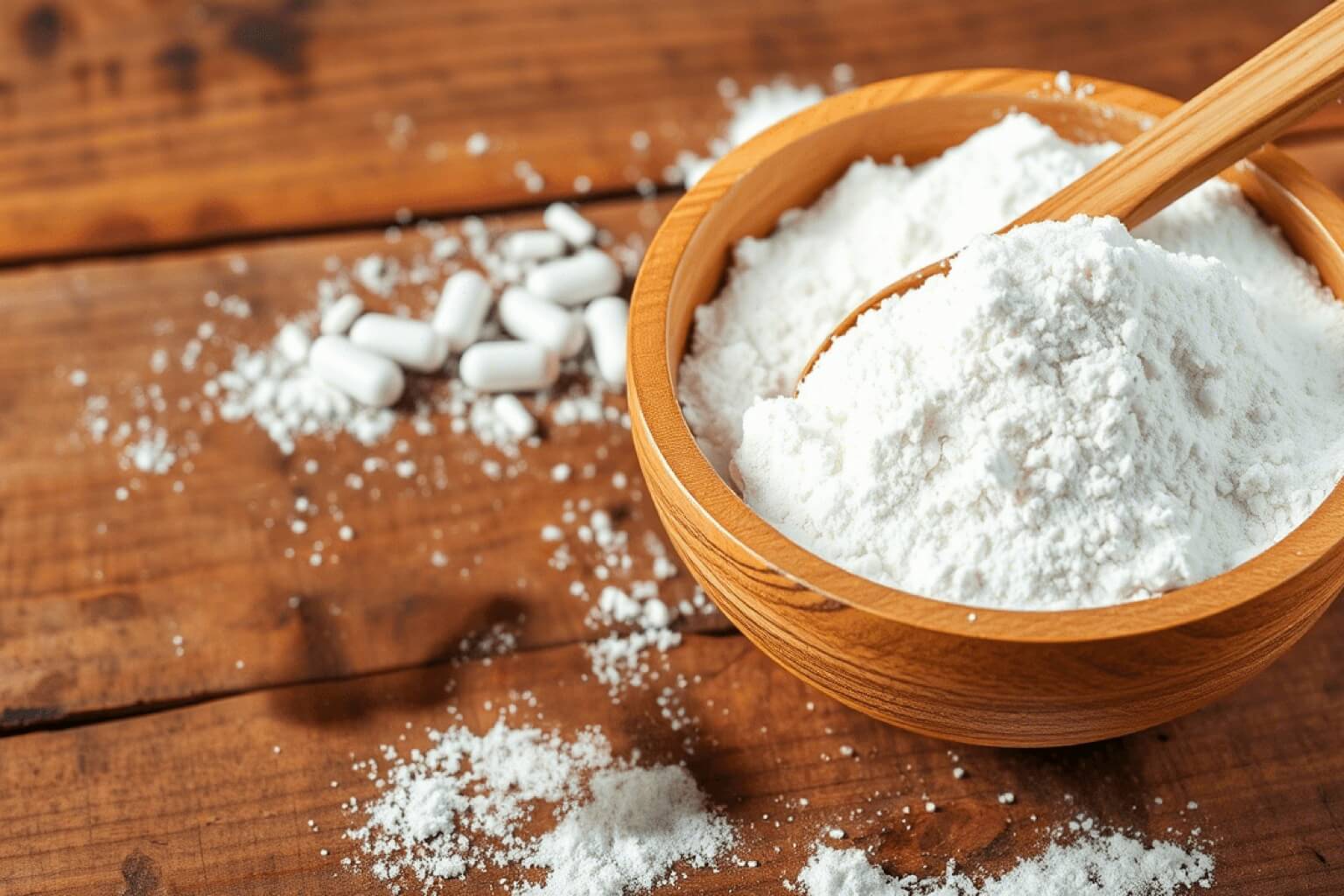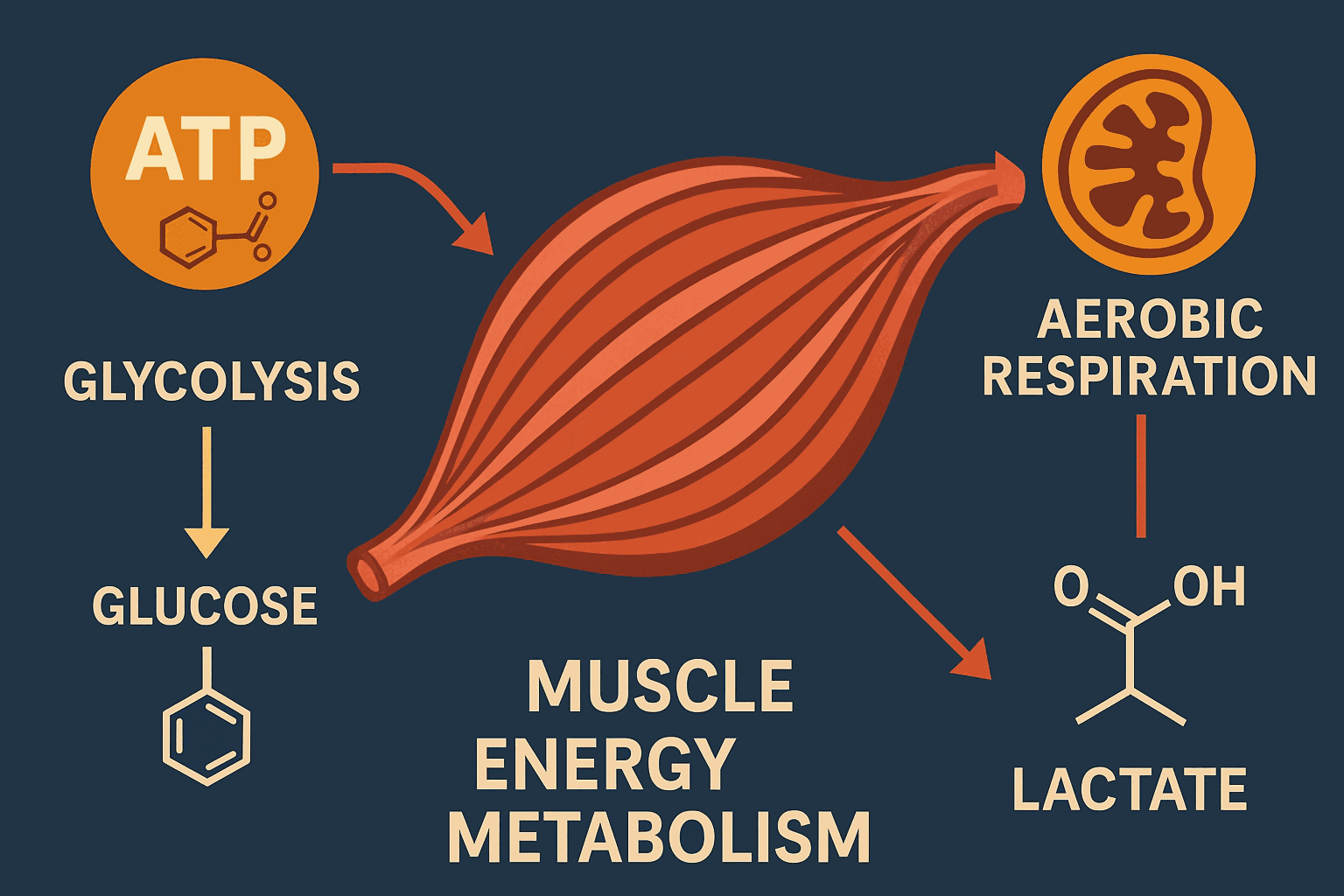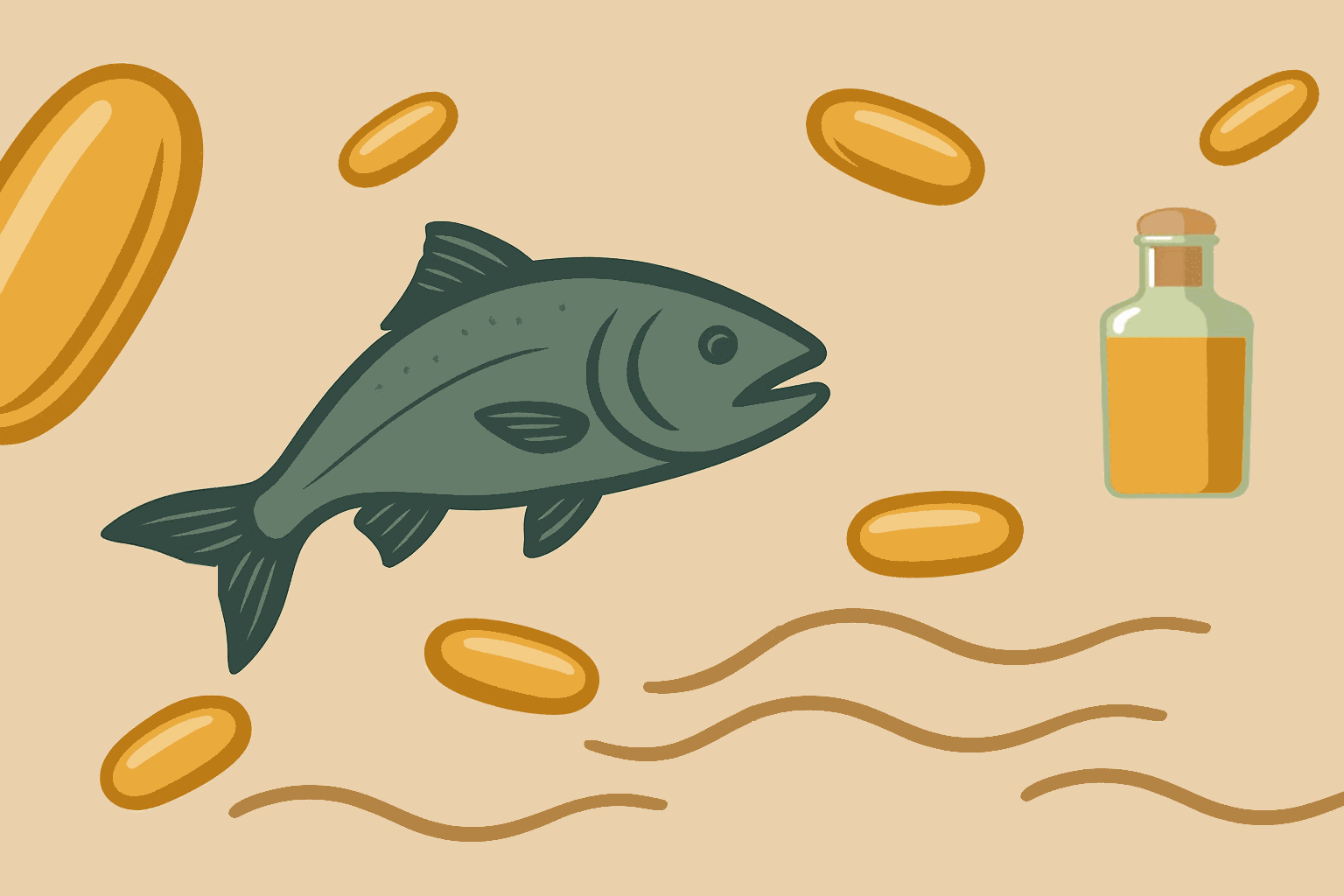
Strength Training for Stronger Bones After 40
- Marcus Reed
- Bone health , Fitness , Healthy aging , Women's health
- November 5, 2025
Table of Contents
Fast Facts: Strength Training & Bone Health (TL;DR)
- Best protocol: Moderate-intensity resistance training 3x/week for ≤1 year boosts spine and hip bone density.
- Why it works: Mechanical stress from lifting activates bone-forming cells (osteoblasts) and improves mineralization.
- Key benefit: Reduces osteoporosis-related fracture risk by strengthening bones and improving balance.
- Hormonal boost: Resistance exercise elevates growth hormone and IGF-1, supporting bone remodeling.
- Safety note: Intensities of 65–80% of 1RM are effective and low-risk for postmenopausal women.
Strength Training for Stronger Bones: Why It’s Critical After 40
For most of your life, your skeleton quietly remodels itself, balancing the activity of bone-dissolving cells (osteoclasts) and bone-building cells (osteoblasts). Until about age 30, you build more bone than you lose, achieving what is known as peak bone mass [12]. Think of this as your “bone bank account.”
Starting around age 40, that balance shifts. We begin to lose approximately 1% of our bone mass per year. In women, this loss accelerates dramatically after menopause as protective estrogen levels decline [3].
Left unchecked, this silent erosion leads to osteopenia (low bone mass) and then osteoporosis, a condition where bones become so weak and brittle that a minor fall or even a cough can cause a fracture [9].
But this decline is not inevitable. Your bones are living tissue, and they respond powerfully to mechanical stress. One of the most effective, accessible, and scientifically validated ways to fight bone loss is strength training.
Recent clinical research, including a major 2023 network meta-analysis of 19 randomized trials, confirms that resistance exercise isn’t just for building muscle. It is a frontline, evidence-based strategy for defending your skeleton [1].
The Science: How Resistance Training Remodels Bone
When you lift weights, your muscles pull on your bones. This mechanical strain sends a powerful signal to your bone-building osteoblasts to get to work. Here’s a breakdown of why this is so effective for preventing and even reversing bone loss.
1. Mechanical Loading Triggers Bone Formation
The stress from resistance training activates a process called mechanotransduction [10]. This physical “tug” on the bone stimulates osteoblasts to lay down new bone tissue and increase mineralization. Over time, this targeted stress tips the balance away from bone resorption (osteoclast activity) and toward bone formation, leading to a measurable increase in bone mineral density (BMD), particularly in high-risk areas like the lumbar spine (lower back) and femoral neck (hip) [1].
2. Optimal Intensity Matters: Moderate Is Best
You don’t need to become a powerlifter. In fact, research shows that moderate intensity (defined as 65–80% of your one-rep maximum, or 1RM) outperforms both low- and high-intensity protocols for improving BMD. Excessively high-intensity training (>80% 1RM) may even create too much stress and suppress bone formation [1].
One 6-month clinical trial demonstrated this “Goldilocks” effect. Women with osteopenia or osteoporosis who used a protocol alternating 6 reps at 70% 1RM with 6 reps at 50% 1RM saw their lumbar spine BMD increase by 1.82%. The control group saw no change [2].
3. Frequency Is Key: 3x/Week Beats 2x/Week
When it comes to bone, consistency trumps weekend-warrior efforts. The 2023 meta-analysis found that training three times per week was significantly more effective than training twice per week, especially for spine BMD. Bones adapt to regular, repeated loading [1].
4. It Provides a Crucial Hormonal Boost
Resistance training is anabolic, meaning it promotes growth. It triggers the release of growth hormone and IGF-1, both of which support the bone remodeling process and encourage osteoblast activity [3].
5. It Prevents Fractures by Preventing Falls
Strong bones are only part of the equation. Most osteoporotic fractures are the direct result of a fall [9]. Strength training is one of the most effective ways to prevent falls by:
- Building muscle strength (especially in the legs and core)
- Improving balance and coordination
- Increasing reaction time
Stronger muscles act as a “functional skeleton,” improving stability and protecting you if you do stumble [3], [7].
Your Evidence-Based Bone-Building Protocol
 If you are over 40 or are navigating perimenopause or postmenopause, here is a practical, evidence-based approach to start with.
If you are over 40 or are navigating perimenopause or postmenopause, here is a practical, evidence-based approach to start with.
- Intensity: 65–80% of 1RM. (This should feel challenging by the last 2–3 reps of a set, but you can still maintain good form).
- Frequency: 3 non-consecutive days per week (e.g., Mon/Wed/Fri).
- Duration: Studies show significant benefits within 6-12 months. After a year, you may need to “progress” the program (e.g., increase weight, change exercises) to avoid a plateau [1].
- Exercises: Focus on compound movements that load the spine, hip, and wrist. The successful 2022 study used a machine-based circuit, which is an excellent and safe way to start [2].
- Leg Press
- Back Extensions
- Hamstring Curls
- Knee Extensions
- Seated Dips
- Bicep Curls
- Hip Abduction & Adduction
💡 Safety First: If you have been diagnosed with osteoporosis, it is crucial to speak with your doctor or a physical therapist. Official guidelines recommend avoiding high-impact activities (like jumping) and exercises that involve significant spinal flexion (like forward bends or traditional sit-ups), as these can increase fracture risk [4], [5].
Beyond the Gym: A Synergistic Approach to Bone Health
Strength training is powerful, but it works best as part of a comprehensive strategy. Don’t train in a vacuum. Support your efforts with:
- Adequate Calcium: Aim for 1,000–1,200 mg per day, ideally from food sources like dairy, fortified foods, leafy greens, and sardines [8].
- Sufficient Vitamin D: This “sunshine vitamin” is essential for calcium absorption. Most adults need 600–800 IU per day, though many require more. Get sensible sun exposure and consider a supplement, especially in winter [8].
- Prioritize Protein: Your bone matrix is over 50% protein. Ensuring adequate protein intake (around 1.0–1.2 g/kg of body weight) supports both muscle repair and bone structure [11].
- Avoid Bone Busters: Smoking and excessive alcohol consumption are both toxic to bone cells and accelerate bone loss [6].
The BioBrain Takeaway
You cannot stop the clock, but you can significantly slow—and in some cases, even reverse—age-related bone loss. Strength training is not just about aesthetics; it is a form of preventive medicine for your skeleton.
Whether you are in your 30s building your peak bone mass [12] or in your 50s actively fighting postmenopausal bone loss [[1]](#references], the message from the data is clear: 3 days a week of moderate resistance training is one of the most effective investments you can make in a resilient, fracture-resistant future.
Frequently Asked Questions (Q&A)
Q1: Can strength training really increase bone density after menopause?
Q2: How often should I do strength training to protect my bones?
Q3: Do I need heavy weights to strengthen bones?
Q4: Does strength training reduce fracture risk?
Q5: Is strength training safe for women with osteopenia or osteoporosis?
Disclaimer
The information provided on BioBrain is intended for educational purposes only and is grounded in science, common sense, and evidence-based medicine. It is not a substitute for professional medical advice, diagnosis, or treatment. Always consult a qualified healthcare provider before making significant changes to your diet, exercise routine, or overall health plan.
References
- Wang Z, Zan X, Li Y, et al. (2023) "Comparative efficacy of different resistance training protocols on bone mineral density in postmenopausal women: A systematic review and network meta-analysis"
- Ștefan I.H., Luca F.V., Doroftei T., et al. (2022) "Effects of a Specific Resistance Training Protocol on Lumbar Spine Bone Mineral Density in Postmenopausal Women with Osteopenia/Osteoporosis"
- Harvard Health Publishing (2021) "Strength training builds more than muscles"
- Beck B.R., Daly R.M., Singh M.A., Taaffe D.R. (2017) "Exercise and Sports Science Australia (ESSA) position statement on exercise prescription for the prevention and management of osteoporosis"
- Bone Health & Osteoporosis Foundation "Exercise for Strong Bones"
- Cheng C, Wentworth K, Shoback D.M. (2020) "New Frontiers in Osteoporosis Therapy"
- Benedetti M.G., et al. (2018) "The effectiveness of physical exercise on bone density in osteoporotic patients"
- Mayo Clinic Staff (2023) "Bone health: Tips to keep your bones healthy"
- National Institute of Arthritis and Musculoskeletal and Skin Diseases (NIAMS) (2023) "Osteoporosis"
- Tu K.N., et al. (2020) "The role of exercise in the management of osteoporosis"
- Rizzoli R., et al. (2020) "The role of dietary protein in bone health"
- Weaver C.M., et al. (2016) "The National Osteoporosis Foundation’s position statement on peak bone mass development and lifestyle factors: a systematic review and implementation recommendations"
Tags :
- Strength training
- Bone density
- Osteoporosis prevention
- Bone health after 40
- Resistance training
- Postmenopausal bone loss
- Fracture prevention
- Weight bearing exercise
- Bone mineral density
- Healthy aging


